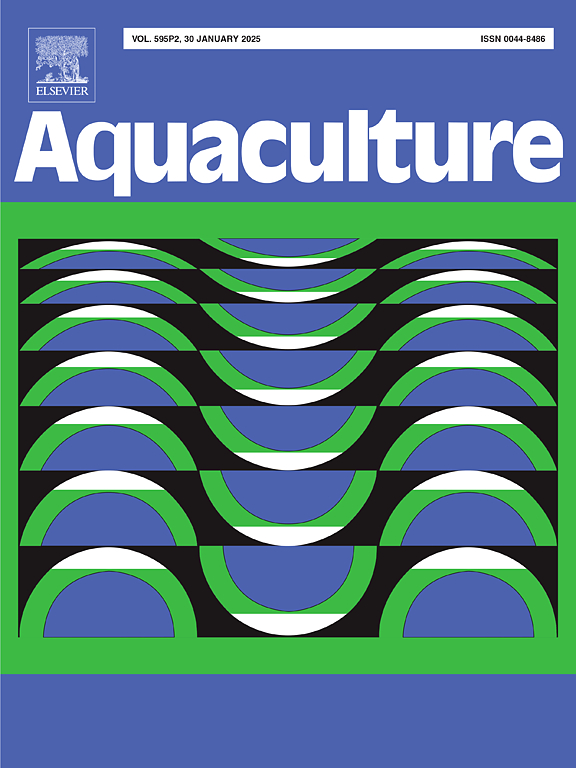Establishment of different artificial infection method models for grass carp reovirus
IF 3.9
1区 农林科学
Q1 FISHERIES
引用次数: 0
Abstract
Grass carp reovirus (GCRV) causes hemorrhagic disease leading to substantial economic losses to the aquaculture industry of grass carp. Effective artificial virus infection methods are essential for the disease-resistant breeding programs and vaccines development. In our study, we established four distinct artificial infection methods for GCRV to identify the most effective approach for inducing infection in grass carp. These methods included feeding, gavage, immersion, and injection. Each method resulted in a similar mortality rate of approximately 80 % and induced characteristic hemorrhagic symptoms associated with GCRV infection. The viral replication patterns were consistent across all infection methods in eight examined tissues, with the intestine, brain, liver, and muscle identified as particularly susceptible to GCRV infection. Furthermore, all artificial infection methods led to significant pathological alterations in the liver and intestinal tissues. Notably, a large number of GCRV viral particles were observed in the kidneys of the infected groups but not present in the control groups. These results underscore the efficacy of the four artificial infection methods evaluated. The choice of the optimal infection method should be tailored to specific conditions. Our findings provide valuable insights for disease-resistant breeding and vaccines development, thereby contributing to the sustainability of the aquaculture industry.
求助全文
约1分钟内获得全文
求助全文
来源期刊

Aquaculture
农林科学-海洋与淡水生物学
CiteScore
8.60
自引率
17.80%
发文量
1246
审稿时长
56 days
期刊介绍:
Aquaculture is an international journal for the exploration, improvement and management of all freshwater and marine food resources. It publishes novel and innovative research of world-wide interest on farming of aquatic organisms, which includes finfish, mollusks, crustaceans and aquatic plants for human consumption. Research on ornamentals is not a focus of the Journal. Aquaculture only publishes papers with a clear relevance to improving aquaculture practices or a potential application.
 求助内容:
求助内容: 应助结果提醒方式:
应助结果提醒方式:


